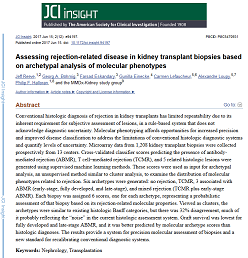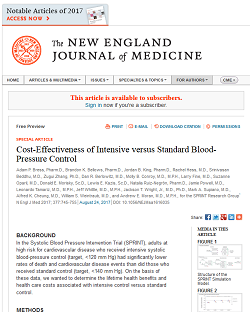The information contained in the publications page are for educational purposes and is not a substitute for a consultation with a physician.
This study aims to report a case of accelerated metabolism of voriconazole in a patient with cerebral aspergillosis.
Authors: Martin J Ferguson, Maria L Randles and Declan G de Freitas
Date: Drug Health Patient Saf. 2017 Sep 8;9:89-9; PMID: 28932128
A 61-year-old with acute granulomatosis and polyangiitis developed Aspergillus fumigatus pneumonia after admission to the intensive care unit with a small bowel perforation. This occurred after immunosuppression (intravenous methylprednisolone, intravenous cyclophosphamide, and plasmapheresis) for his initial presentation with stage 3 acute kidney injury.
Authors: Cormican S, Adams N, O'Connell P, McErlean A, de Freitas D
Date: Skeletal Radiol. 2017 PMID: 28866833
This retrospective study examined kidney transplants over a 10-year period at a single center to determine if pre-implant histology can identify cases of eGFR ≤35 ml/min/1.73m2 at 5 year follow up beyond a clinical predictive logistic regression model.
Authors: Traynor C, Saeed A, O'Ceallaigh E, Elbadri A, O'Kelly P, de Freitas DG, Dorman AM, Conlon PJ, O'Seaghdha CM
Date: Ren Fail. 2017 Nov;39(1):671-677. PMID: 28832239

In the present study, our goal was to develop a new system for assessing rejection-related disease states in kidney transplant biopsies based on molecular phenotypes. We sequentially applied supervised analysis to detect relevant molecular features and then unsupervised analyses to discover the disease classes.
Authors: Reeve J, Bohmig G, Eskandary F, Einecke G, Le Faucheur C, Loupy A, Halloran PF, and the MMDX-Kidney Study Group (de Freitas DG part of)
Date: JCI epub June 2017 PMID: 5470931

In the Systolic Blood Pressure Intervention Trial (SPRINT), adults at high risk for cardiovascular disease who received intensive systolic blood-pressure control (target, <120 mm Hg) had significantly lower rates of death and cardiovascular disease events than did those who received standard control (target, <140 mm Hg). On the basis of these data, we wanted to determine the lifetime health benefits and health care costs associated with intensive control versus standard control.
Authors: Sexton DJ, Kenny RM, O'Seaghdha CM
Date: N Engl J Med. 2017 Nov 30;377(22):2199. doi:10.1056/NEJMc1712465. PubMed PMID: 29188982.

GIN secondary to adalimumab is evidently an underrecognized complication that can lead to rapid progressive renal decline.
Authors: Vicki Sandys, Brona Moloney, Louise Lane, Junaid Qazi, Brendan Doyle,Maurice Barry, Sean Leavey and Peter Conlon
Date: Clinical Kidney Journal, 2017, 1-3